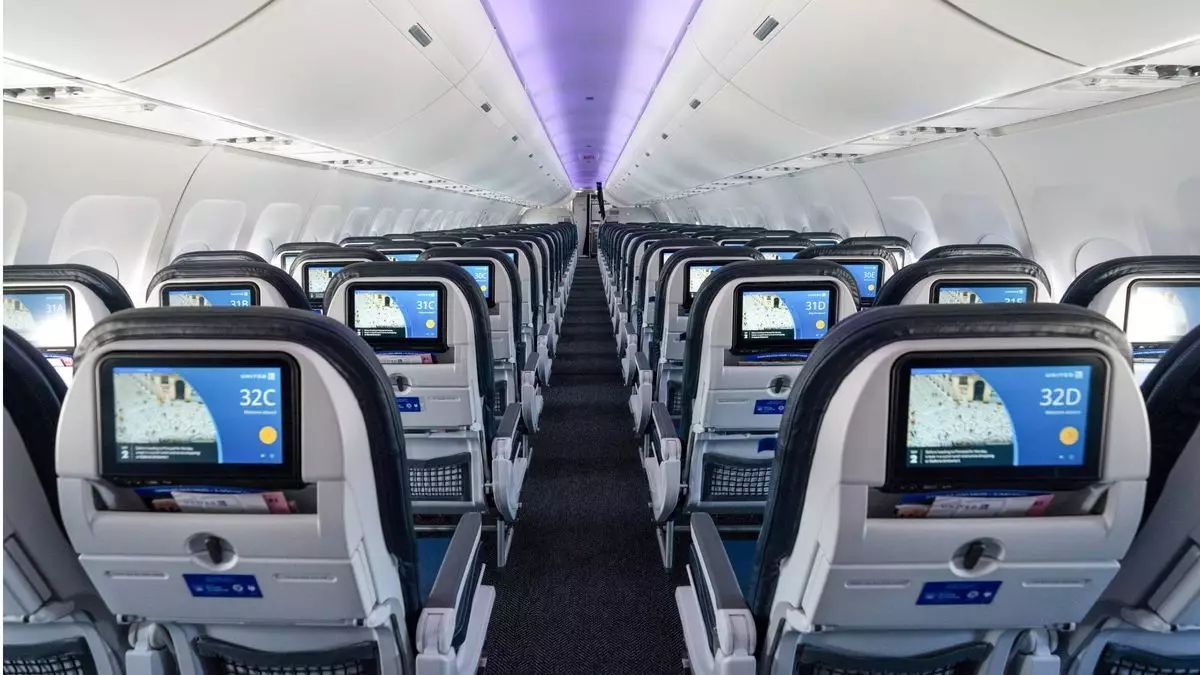United Airlines has witnessed a notable surge in the sales of its basic economy fare, which has become a crucial component in the airline’s strategic offering. During a recent earnings call for the third quarter of the fiscal year, the company revealed that revenue derived from basic economy tickets had increased by 20% over the previous year. This follows an astounding 50% growth the year before, signaling that this model resonates with a growing number of travelers. Chief Commercial Officer Andrew Nocella characterized this product as a “home run,” emphasizing its substantial positive alteration of the airline’s financial picture.
Basic economy passengers now constitute about 16% of United’s domestic clientele, a significant uptick from 12% just a year prior. These figures underscore a profound shift in consumer behavior, suggesting that many passengers are prioritizing cost savings over traditional airline perks. In exchange for a lower fare, basic economy travelers face certain restrictions, such as the inability to select their seats or stow carry-on luggage in overhead bins. However, they are still permitted a personal item that can fit beneath the seat.
Looking ahead, Nocella forecasts an even broader availability of basic economy tickets, particularly if this less expensive fare continues to prove lucrative. The airline’s strategy is further bolstered by the introduction of larger aircraft, which facilitates the increase of basic economy inventory. By the year 2027, United expects to average 145 seats per flight in North America, a significant increase from the 104-seat average recorded in 2019. This month, United plans to offer roughly 130 seats per flight systemwide, reflecting a solid 19-seat increase from October 2019.
While United Airlines dives deeper into the low-fare market with basic economy, it is equally focused on enhancing its premium offerings. This strategic diversification has landed United on a competitive tier alongside Delta and Alaska, both of which are recognized for maintaining healthy profit margins. In the latest earnings report, United revealed a pre-tax margin of 9.7%, outperforming Delta’s margin of 8.9%.
For the third quarter, United Airlines reported a total revenue of approximately $14.84 billion, surpassing Wall Street’s expectations by a margin of $70 million. Despite expenses climbing to $13.28 billion—a 4.2% increase from the previous year—these figures reflect the airline’s resilience in a turbulent market. Notably, there was a minor drop of 1.1% in revenue per passenger mile during the first part of the quarter due to industry overcapacity; however, the situation improved significantly by mid-August, with fare pricing now on an upward trajectory compared to 2023.
In terms of net income, United saw a decrease of 15.1% year over year, landing at $965 million. Despite this decline, the airline announced plans to reinstate share repurchases for the first time since the onset of the Covid-19 pandemic, with a committed budget of $1.5 billion for buybacks. This decision led to a spike in United’s stock price to $72 per share, marking a remarkable 12% jump in one day and a 90% rise since early August.
However, not all aspects of United Airlines’ financial maneuvers have been met with applause. The Association of Flight Attendants-CWA has raised concerns regarding the stock buyback plans, especially while negotiations for new contracts are underway. This tension highlights the complexity of balancing financial strategies with labor relations, an area where United must tread carefully to ensure sustainable growth.
While United Airlines experiences marked success through its basic economy offerings and overall financial growth, it must simultaneously navigate the challenges presented by union negotiations and the competitive airline landscape. The dual focus on providing affordable travel options while enhancing premium services illustrates a keen understanding of market dynamics, positioning United Airlines for sustained profitability moving forward.


Leave a Reply